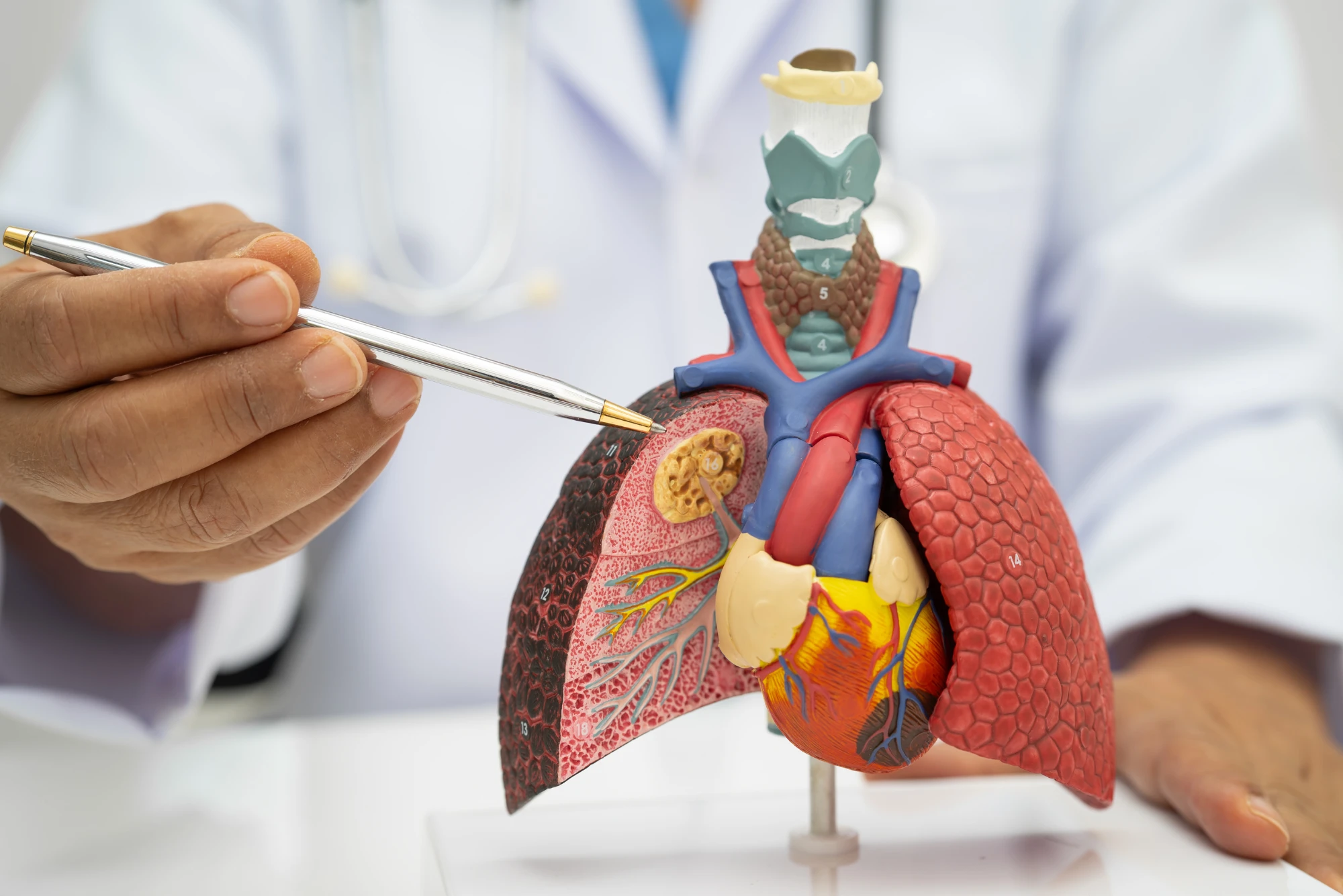How Do Our Lungs Change with Age? | Aging, Breathing & Lung Health Tips
Understanding the Lungs and Their Vital Role
Your lungs are a key part of the respiratory system — a complex network of organs and tissues that work together to help you breathe. Their two main functions are:
Bringing oxygen into your body, which fuels all vital processes.
Expelling carbon dioxide, a waste product produced when cells use oxygen.
Inside your lungs are millions of tiny air sacs called alveoli, where oxygen and carbon dioxide are exchanged between the air you breathe and your bloodstream. These sacs are essential for keeping your body supplied with oxygen and removing harmful gases.
Healthy lungs are crucial for energy, mental clarity, immunity, and overall wellbeing — but like every other organ, they change as we age.
How Lung Function Changes Over Time
Your lungs mature around the ages of 20 to 25, reaching their peak performance. However, after the age of 35, their capacity and efficiency gradually decline as part of the natural aging process.
By adulthood, the maximum amount of air your lungs can hold (total lung capacity) is about six liters — roughly the size of three large soda bottles. Over time, small structural and functional changes can make breathing feel less efficient, especially during exertion.
Interestingly, in people without lung disease, this decline is often related to changes in the cardiovascular system and muscle strength, rather than the lungs themselves.
Age-Related Physical Changes in the Lungs
1. The Alveoli Lose Elasticity
As we age, the alveoli — the small air sacs in the lungs — can lose their shape and elasticity, becoming slightly baggy. This reduces the surface area available for oxygen exchange, meaning your lungs must work harder to deliver the same amount of oxygen.
Over time, this change can lead to shortness of breath during physical activity, even in otherwise healthy individuals.
2. The Diaphragm Weakens
Your diaphragm, the main muscle responsible for breathing, naturally becomes weaker with age. This makes it harder to inhale deeply and exhale fully.
Although subtle at rest, this becomes more noticeable during physical activity. Maintaining core strength and practicing regular deep-breathing exercises can help support diaphragm function.
3. Chest Wall and Bones Become Stiffer
As we age, the bones and cartilage surrounding the chest become less flexible. This restricts how much the lungs can expand and contract.
The reduced flexibility of the rib cage can make breathing shallower, which is why staying active and maintaining good posture is important.
4. Lungs Darken in Color Over Time
The lungs of newborns are pinkish white, but with age, they gradually darken — first gray, then sometimes darker in patches. This is caused by carbon particles, pollutants, and dust accumulating in the lung tissue over a lifetime.
This color change doesn’t always indicate disease, but it does reflect long-term exposure to environmental pollutants.
Common Factors That Accelerate Lung Aging
While aging naturally affects the lungs, several factors can speed up the decline in lung function:
Smoking and exposure to secondhand smoke
Air pollution and chemical fumes
Chronic respiratory infections
Sedentary lifestyle and poor posture
Untreated allergies or asthma
Long-term exposure to indoor pollutants such as mold, dust, or chemicals
Taking proactive steps to limit exposure to these factors can significantly slow down lung decline.
How to Support Healthy Lungs as You Age
1. Avoid Smoking and Polluted Environments
Smoking remains the leading cause of premature lung damage. Quitting at any age brings immediate and long-term improvements.
Avoiding secondhand smoke, air pollution, and harmful fumes also protects lung function.
2. Stay Active and Exercise Regularly
Exercise strengthens your respiratory muscles and increases lung efficiency. Activities such as walking, swimming, cycling, and yoga improve oxygen intake and help maintain healthy breathing.
3. Practice Deep Breathing and Relaxation
Incorporating deep breathing exercises, such as diaphragmatic breathing, helps maintain lung elasticity.
Meditation and relaxation techniques reduce stress — which indirectly benefits lung health.
4. Keep Indoor Air Clean
Improve indoor air quality by:
Ventilating your home regularly
Using air purifiers
Minimizing use of scented candles or incense
Cleaning air conditioners and humidifiers frequently
Indoor plants such as peace lilies and spider plants can also help reduce pollutants.
5. Eat Foods That Support Lung Health
A diet rich in antioxidants and anti-inflammatory nutrients helps protect lung tissue. Beneficial foods include:
Berries
Leafy greens
Ginger and turmeric
Nuts and seeds
Fatty fish rich in omega-3
These foods help reduce inflammation and oxidative stress that may accelerate lung aging.
When to See a Doctor
Seek medical guidance if you experience:
Persistent shortness of breath
Chronic cough
Wheezing or chest tightness
Reduced ability to exercise
Frequent chest infections
Early evaluation helps prevent serious complications and improves overall lung health outcomes.
Breathe Well, Live Well
Aging is inevitable — but the way your lungs age is something you can influence. By understanding how your lungs change over time and taking proactive steps to protect them, you can maintain strong, healthy breathing throughout your life.
Remember: your breath is your life — protect it with every inhale.

